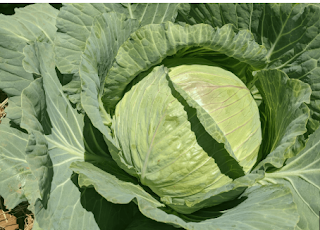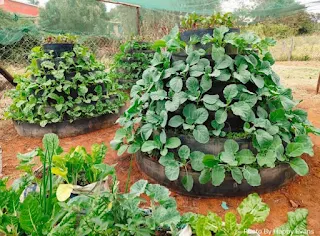Banana passion fruit is a delicious fruit that has a sweet, acidic,
and tropical taste with subtle peach and nectarine-like nuances. It smells
faintly of oranges and looks like a small banana with yellow skin and orange
pulp. The pulp contains many black seeds that are edible but may have a bitter
flavor if crunched.
 |
| Banana Passion Fruits |
They produce large pink tube-like flowers at all times of
the year. These develop into oval fruit that turn yellow to orange yellow when
they're ripe. The fruit can be eaten, and the seeds are spread by animals,
birds and people.
Banana passion fruit farming in Kenya presents a unique
opportunity for farmers looking to tap into a growing market. With increasing
demand for exotic fruits, this crop is gaining popularity.
Banana passion fruit, known for its delicious flavor and
health benefits, can be a high-value addition to your agricultural portfolio.
Pruning: The Importance of Pruning in Fruit Trees Management
Nutritional Benefits
- Banana Passion Fruit has a lot of benefits for health such us:
- Helps to reduce the stress.
- Reduce the blood pressure.
- It has antispasmodic and diuretic properties.
- Helps to reduce blood pressure.
- Stimulates collagen production.
- Strengthens the immune system.
- It is a natural antioxidant.
- Neutralizes free radicals.
- Facilitates the healing process.
- It’s ideal to improve digestion.
- Helps to reduce anxiety.
- Decreases fever.
- Reduces headaches.
- Protects the nervous system.
- Improves vision health.
- Supports bone health.
- Facilitates the absorption of nutrients.
- Facilitates the regeneration capacity of organs, tissues and cells.
- It’s used to improve the hydration of the skin, and can also works as an exfoliant.
Ideal Climatic Conditions
Banana passion fruit thrives in warm, tropical climates. The
ideal temperature ranges between 20°C to 30°C. Good rainfall, around 800mm to
1,200mm per year, is essential for growth. Regions like Central, Rift Valley,
and parts of Western Kenya are particularly suitable due to their favorable
weather.
Soil Preparation
Well-drained, loamy soils rich in organic matter offer the
best growing conditions. Before planting, test the soil pH, which should be
between 6.0 and 7.0. Add compost or well-rotted manure to improve fertility.
Regular fertilization with nitrogen, phosphorus, and potassium will support
healthy growth.
Select a location with good sunlight exposure and protection
against strong winds. Avoid areas prone to flooding. Accessibility to water
sources is also crucial for irrigation during dry spells.
Planting and Propagation
Go for disease-resistant varieties that are known for high
yields. Popular choices include ‘Sweet Gold’, known for its sweetness, and
‘Purple Passion’, which has a high market demand due to its vibrant color.
 |
| Banana Passion Fruits |
Propagation Methods
You can propagate banana passion fruit using seeds or
cuttings. Seeds often take longer to germinate and grow, while cuttings produce
faster results. For cuttings, choose healthy branches from mature plants.
Maintain a planting distance of about 3 meters between
plants. This spacing allows for adequate airflow and sunlight, reducing
competition for nutrients. A density of 160 to 300 plants per acre is ideal for
maximizing yields.
The flowers of passion fruit are self-fertile due to
the flower morphology, being structured so that the anthers are placed below
the stigmas.
Fertilization
Use recommended fertilizer or a citrus food or a
chicken manure fertilizer. Water plants well before adding fertilizer then
spread it around the base of the stem and along the area where the roots are growing.
After feeding in, spread organic mulch such as compost or aged cow manure 2 to
3cm deep.
Caring for Banana Passion Fruit Trees
Regular applications of liquid seaweed and liquid fertilizer will improve growth, flowering and fruiting. Ensure your plant is adequately watered during flowering and fruit development. If it is allowed to become dry while fruit is forming, it will often drop the fruit.Overwatering leads to yellow leaves with a sad, wilted look.
Underwatering will give you crispy edges. To hit the sweet spot, check the soil
before you water; it should be moist but not soggy
Pest and Diseases
Watch for pests like aphids, fruit
flies, and spider mites. These pests suck the life out of
leaves, leaving them pale and mottled.
 |
| A Ripe Banana Passion Fruit |
Management
For a green approach, introduce ladybugs
or lacewings to your garden; they're natural predators. If you're going for the
nuclear option, insecticidal soaps or neem oil can be effective. Just be sure
to hit those sneaky pests where they hide under the leaves. Remember regular
monitoring helps catch infestations early.
Diseases
Common diseases include root rot and Fusarium wilt. Rotate
crops and maintain clean farming practices to minimize risks. Use certified
seeds and healthy cuttings to prevent disease introduction.
Management
Utilize Integrated Pest Management techniques for sustainable
farming. Encourage beneficial insects, use organic pesticides and apply traps
to control pest populations naturally.
Nectarine Farming in Kenya: Tips To Grow, Harvest and Sell
Why Tissue Culture Bananas Produce More Than Those Planted From Suckers?
Harvesting
Harvest banana passion fruit when the fruits turn from green
to yellow or purple, depending on the variety. Check for firmness; ripe fruits
are slightly soft. Use gentle techniques to avoid bruising the fruit. Harvest
in dry weather to prevent spoilage. Store harvested fruits in cool, ventilated
areas to extend shelf life.
Financial Aspects and Business Planning
Startup costs include seedlings, land preparation,
irrigation, and fertilizers. Depending on the scale, costs can range from KSh.25,000
to KSh.50,000 per acre.
Profitability
With proper management, yields can reach 5 to 11 tons per acre
annually. At market prices ranging from KSh.50 to KSh.100 per kg, profits can
be substantial with good sales strategies.
Banana passion fruit farming offers exciting opportunities
for profit in Kenya. Understanding the climate and soil requirements, effective
planting techniques, and pest management is vital for success. The market is
poised for growth, and adopting sustainable practices can ensure long-term
profitability.
As demand for exotic fruits increases, now is the ideal time to invest in banana passion fruit farming. With careful planning and execution, farmers can reap significant rewards. Start exploring this lucrative venture today.
Call or WhatsApp 0724698357/0723213602 for our propagated Banana Passion
Fruit Seedlings.
- Cost per seedling: ksh. 100
- Seedlings per acre: 160-300
- Spacing: 3m by 3m
- Fruit price: Ksh. 50-100 per kg
- Common pests: aphids, fruit flies, and spider mites
- Common diseases: Root rot, Fusarium Wilt
- Lifespan: 15-20 years
Frequently Asked Questions
- How many banana passion fruit trees per acre in Kenya?
- How long does banana passion fruit take to mature in Kenya?
- How much is banana passion fruit per kg in Kenya?
- How long does it take to grow banana passionfruit?
- What are the ideal climatic conditions for banana passion farming in Kenya?
- What are common pests and diseases affecting banana passion fruit farming?
- What are the nutritional benefits of banana passion fruit?














